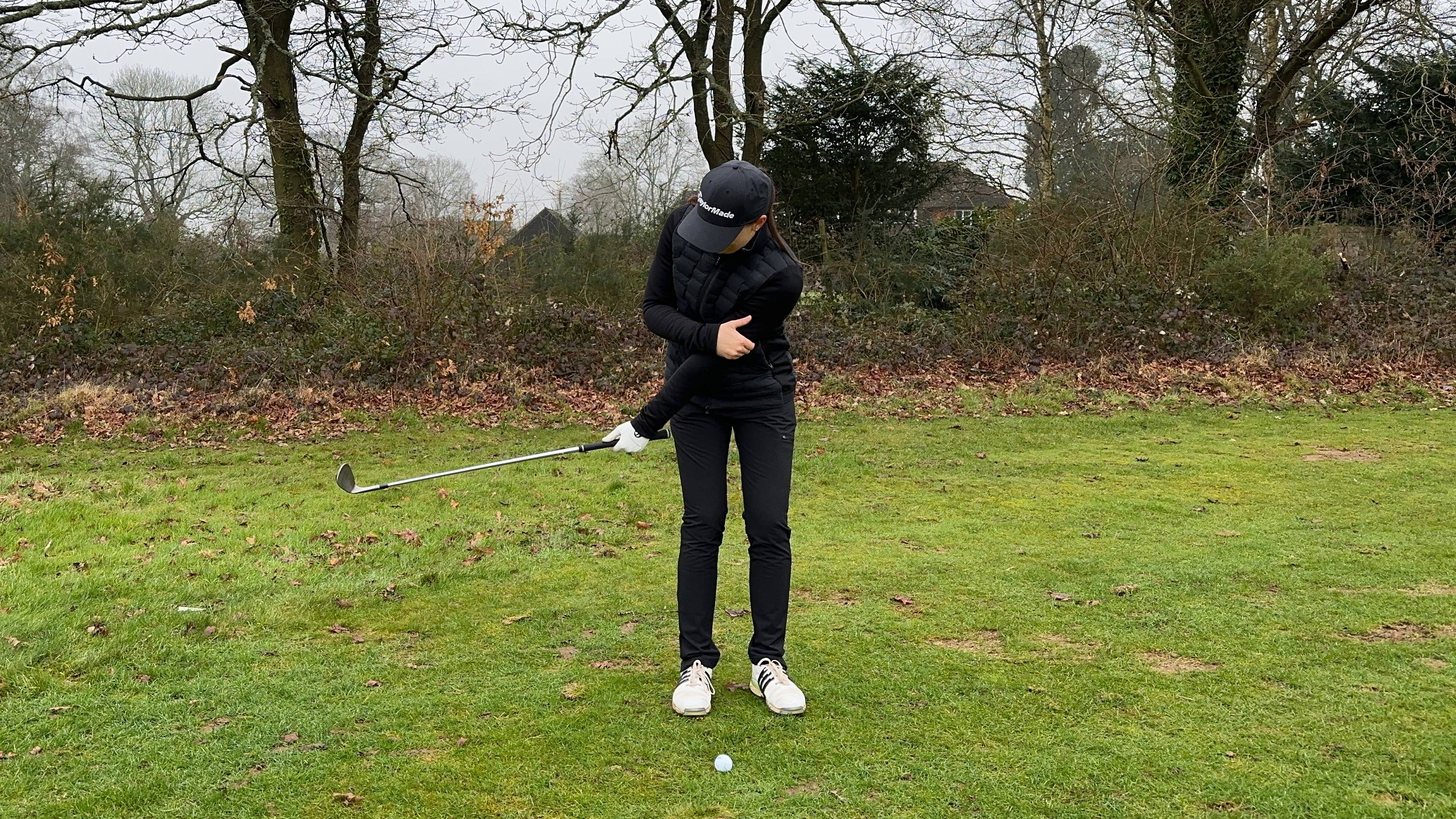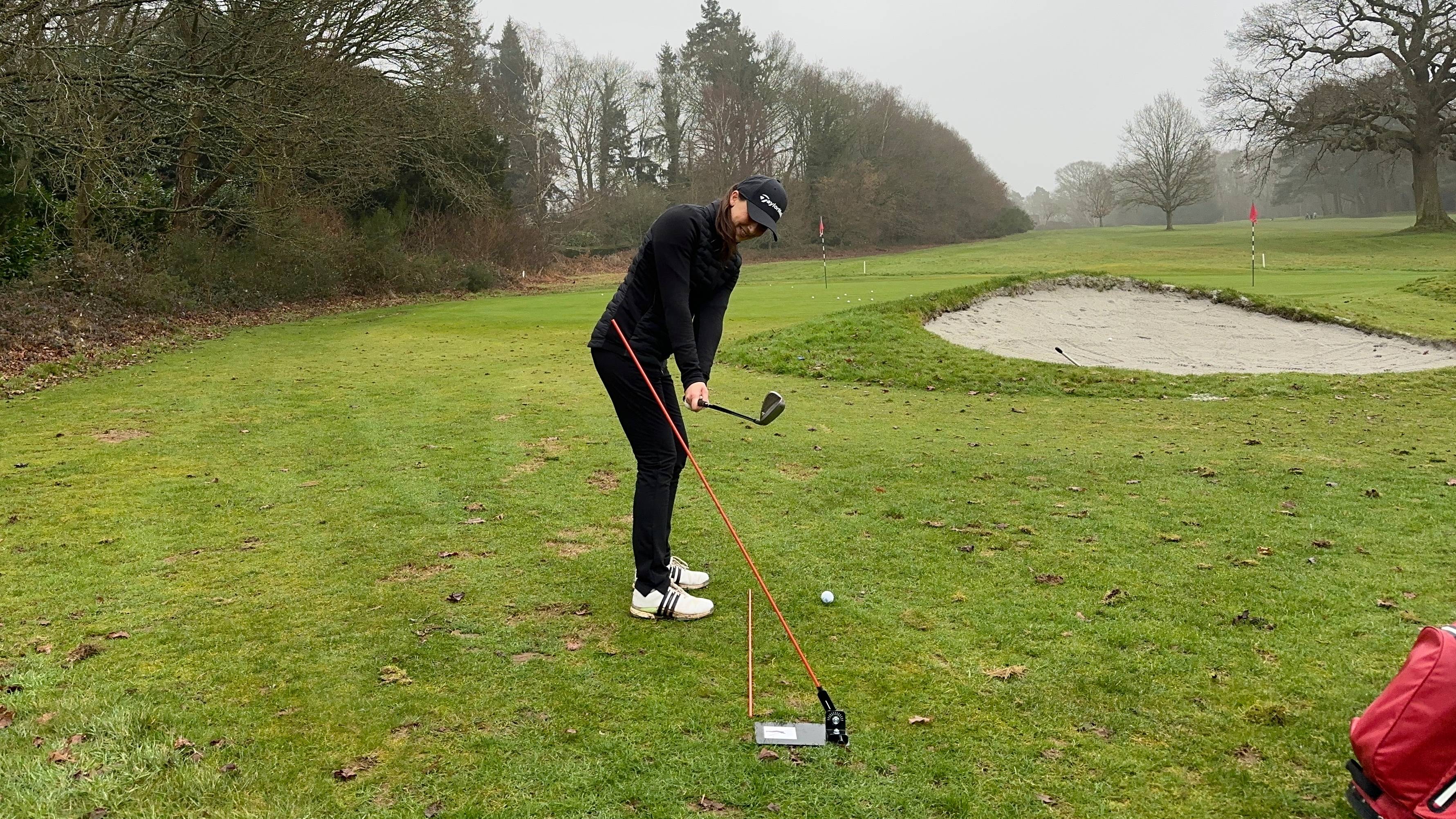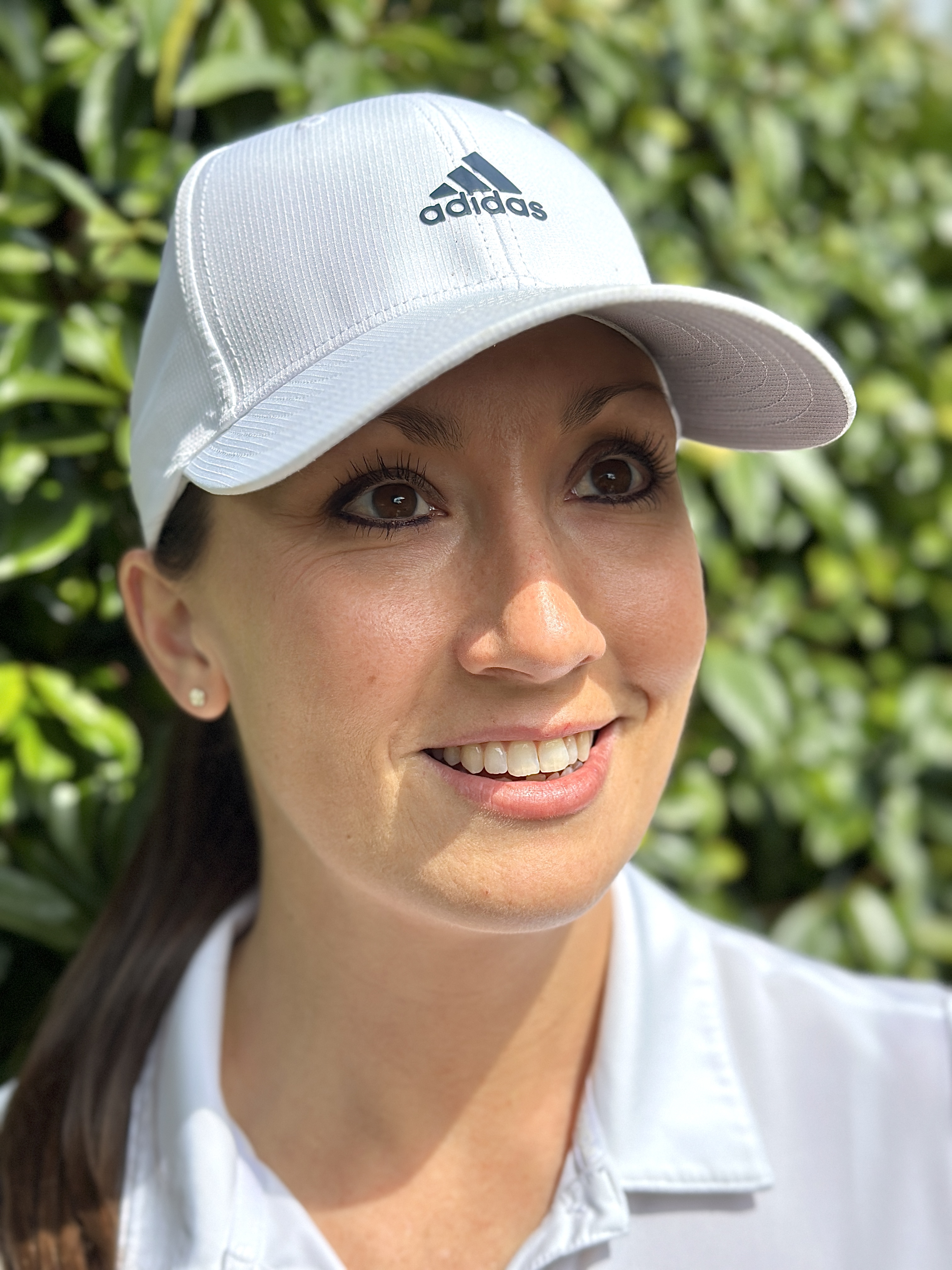'I’ve Finally Fixed The Move That Was Killing My Golf Swing'
Single figure golfer Jess Ratcliffe shares the challenge she took on to fix an ingrained swing fault


After taking up golf during lockdown and going all in on my goal of getting to single figures in a year, I picked up a few bad swing habits that have been hard to shake. Of those tendencies, the toughest to change has been my takeaway.
No matter how hard I tried, I couldn’t stop my wrists from rolling away from me and whipping the club inside – getting flat behind me and setting me up for a swing full of compensations. All making up for that initial wristy move.
And although my inside takeaway didn’t stop me from hitting my goal of getting to single figures, I knew it would eventually put a ceiling on my progress. Leaving me forever fighting for consistency of strike.
That’s why, this winter, I set myself a challenge to fix my rolly wrists, so that come spring, I’ll be ready to take my game to the next level.
Here are 5 tips that have helped me make a swing change that’s finally stuck.
Think Like A Puzzle – Going Deep On One Thing At A Time
When I look back on why past attempts to fix my takeaway didn’t stick, I realise I was working on too many things at once. I would see my big ol’ overswing and over-the-top downswing and get sucked into working on a bit of all of it, rather than focusing on the root move first.
So this time around, I’ve been working on my swing like it’s a puzzle. When you complete a puzzle, you don’t place individual pieces – a bit here, a bit there – and hope they eventually match up. You focus on one section at a time, like completing the edges before starting on the most obvious part of the picture.
Subscribe to the Golf Monthly newsletter to stay up to date with all the latest tour news, equipment news, reviews, head-to-heads and buyer’s guides from our team of experienced experts.
And by working your way through the sections, the puzzle comes together because you’ve gone deep on one thing at a time, rather than trying to do a little of everything.

Start With Wedges – Making Small Swings But Big Moves
This is something I did differently before and it’s a step I would now never skip when I’m working on a swing change.
Looking back on my past attempts, I would have run to the range and blasted through bucket after bucket, typically hitting my 7-iron or even reaching for my driver. And then feel disappointed when that bad habit didn’t shift.
But this time around, for the first few weeks of winter, I only hit my 58 degree wedge – focusing on small swings but big, exaggerated moves to build awareness of the feeling that I want, rather than slip back to the habit that I don’t.
A scratch-golfer-friend shared this tip with me and I’ve held onto it because if I can’t make the move I want with a short club and small swing, then it’s highly unlikely that I’ll be able to make it with a longer club and bigger swing.
So rather than rush to the range, I set up camp in the short game area of my home club and got to work on hitting small, slow swings while making big, exaggerated moves.

Find The Feel With Feedback - Matching That Feel And Real
One thing that still confuses me about the golf swing is how far apart feel and real can be. As someone who films their swing quite a bit, it baffles me when I think I’ve made a move to only watch my swing back and see that I was nowhere near where I thought I was.
That’s why, throughout this swing change challenge, I’ve used two things to give me immediate feedback – my phone to film my swing in slow motion and alignment sticks to teach me if I’m going off track with my takeaway.
In my feedback station, I put one alignment stick on the ground as my target line and the other, I put behind me at an angle, so that if I rolled the club inside, I would hit the stick behind me. The stick was far enough away that I didn’t have to worry about it but the idea that it was there, trained me to avoid it.
And then when it came to filming my swing, I would set my phone (on a tripod) down the line of my hands (and the target line stick), so that I could see if I was making the move I wanted to. After hitting a handful of balls, I would watch my swing back to see how it was looking and tweak as needed.

Exaggerate The Opposite – Pinpointing The Move To Groove
When it came to finding the feeling in the first place, this is something that helped me – exaggerating the opposite of my bad habit.
For example, with my inside takeaway, the move that I didn’t want to make (and see in my slow mo swings) was my wrists moving away from my body, rolling the club behind and around me.
So to identify the move that I did want to make, I thought of the opposite. Instead of my hands moving away from me, I wanted them to move closer to me, specifically “brushing” my trail knee. Even by doing this as a rehearsal, I could see immediately that by keeping my hands in, the club stayed out in front of me, rather than getting flat behind.
To make sure the exaggerated opposite created the move that I wanted, I would check it against my alignment stick feedback station and on video. It felt odd to do the opposite move at first but after getting enough reps in, it began to override my bad habit.
Make It A Project – Giving Yourself The Time To Stick With It
Looking back on making this swing change, there’s two ingredients that have been key – time and patience.
Last winter, I put in the time, but if I’m honest, I didn’t have the patience or awareness to focus on one part of the puzzle. And so, even if I made a bit of progress, I didn’t make a change that stuck and I found myself falling back into my bad habits throughout the golf season. It was that exhausting dance with my default tendencies that gave me the motivation to make the change stick this winter.
So I knew that it would take rep after rep, session after session to have an impact. And that, especially on the days when it felt like nothing was clicking, I needed to stay patient and persist – to trust that this work will pay off in the long run. It might not show itself today, tomorrow or even the next day but in a week or two or three that consistent effort would compound.
That’s why I made this challenge a project in my mind and blocked out the time to work on it – spending, on average, an hour and a half a day since the start of December. I took my time, hitting those slow swings and then checking my progress on video. Rinse and repeat.
I won’t lie – it tested my discipline to keep showing up, especially in the middle dip, when it felt like this change might never click. But now, almost two months on, my rolly wrists are gone and I’m so happy that I started and stuck with it.
Follow Jess’ golf journey on YouTube and Instagram.
After cutting her handicap from 34 to 9 in a year, Jess Ratcliffe is documenting how she’s working on her game to get really good at golf on her YouTube channel and Instagram.
